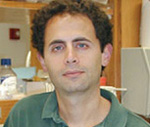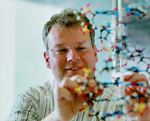Hubert Girault, Chemical Science Associate Editor for analytical science, met up with RSC Publisher Niamh O’Connor and Hirofumi Seike (RSC Representative, Japan) in Kyoto on Sunday to host a dinner for leading physical and analytical chemists.
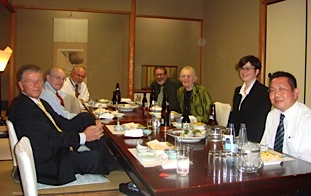
Clockwise from left: Hubert Girault, Richard van Duyne, Steven Soper, Richard Zare, Susan Zare, Niamh O'Connor, Hirofumi Seike
The group are in Japan for the IUPAC International Congress on Analytical Sciences 2011, which is on until 26th May.
Obviously there will be lots of discussion at the meeting about the best and latest advances in the analytical sciences. Here’s my pick of some of the most exciting recent Chemical Science articles in this area:
Heavy water hydration of mannose: the anomeric effect in solvation, laid bare
Nitzan Mayorkas, Svemir Rudić, Benjamin G. Davis and John P. Simons, Chem. Sci., 2011, 2, 1128-1134
Accelerated bimolecular reactions in microdroplets studied by desorption electrospray ionization mass spectrometry
Marion Girod, Encarnacion Moyano, Dahlia I. Campbell and R. Graham Cooks, Chem. Sci., 2011, 2, 501-510
Rapid prototyping of poly(dimethoxysiloxane) dot arrays by dip-pen nanolithography
Aaron Hernandez-Santana, Eleanore Irvine, Karen Faulds and Duncan Graham, Chem. Sci., 2011, 2, 211-215
These articles, like all Chemical Science content, are free to access until the end of this year. Sign up for the Chemical Science e-alert to get details of the exceptional content delivered straight to your inbox.
Hubert Girault is welcoming Chemical Science submissions in the areas of analytical science and electrochemistry. Submit to his editorial office today to be seen with the best.












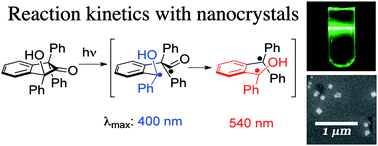
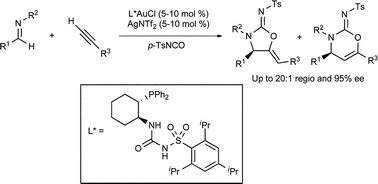
 On Monday I attended the
On Monday I attended the 